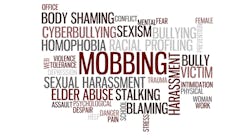On April 28, we’ll observe Workers’ Memorial Day to honor workers who have died while on the job. It’s a sobering reminder that not every employee who reports in at the beginning of their workday goes home at the end of it. Indeed, according to the Bureau of Labor Statistics, the number of fatal work injuries reported in the U.S. climbed 7% over the previous year, and in fact it’s the third straight year workplace fatalities have increased.
The BLS also compiles a ranking of the most dangerous jobs in the U.S., based on number of fatalities. By that yardstick, the worst job to have if you want to make it home safe every night is anything in the transportation industry, but particularly truck drivers and material moving occupations, which saw 1,388 fatal injuries in 2016, the most recent year for which statistics were available. This helps explain the tremendous interest in autonomous vehicles, although the recent incident in Arizona where an Uber robot car struck and killed a pedestrian might slow the rollout of driverless cars and trucks.
Another metric the BLS uses is fatal work injury rate, which is calculated by the number of deaths per 100,000 full-time equivalent workers in any given industry. By that measurement, then, the most dangerous occupation in the U.S. is loggers and lumberjacks, where the death rate has more than doubled over the past decade. In addition to falls, struck-by incidents and the use of dangerous tools such as chainsaws and axes, a lot of inexperienced and undertrained workers come into the logging industry every year, and unfortunately, not all of them survive the rigors of the job. With a fatal work injury rate of 135.9, loggers are by far the workers most likely to die on the job, with fishers coming in a not-so-close second (86.0).
But are these really the most dangerous jobs in the country? At least some of those fatalities, if we’re being honest here, are due to carelessness or recklessness, and most if not all of the fatalities are accidental. But I would submit that there are any number of jobs whose workers are subjected to dangerous situations with disturbing regularity, in workplaces where those dangers are deliberate and malicious.
Not every workplace danger, after all, involves an employee being put in the way of physical harm. There’s workplace bullying, for instance, where an employee’s self-esteem and even ability to function productively are systematically broken. According to a study conducted by Career Builder, nearly a third (29%) of all workers say they’ve been bullied at work. If you’re a woman the rate is 32%, and if you’re an LGBT worker the incidence is alarmingly high at 40%.
There’s sexual harassment, which Hollywood has apparently just discovered but women in industry have known about for far too long. A recent CNBC survey found that 27% of women in the U.S. have been victims of sexual harassment in the workplace, while 10% of American men have also been victimized.
There are no official estimates of how many immigrants are subjected to forced labor practices in the U.S., but most studies agree the numbers are in the tens if not hundreds of thousands. Slavery in the 21st Century not only exists but is thriving, and on a global scale it generates $150 billion in illegal profits every year, according to Action Sustainability. While sex trafficking accounts for some of the forced labor, by far most of it occurs in manufacturing, construction, agriculture, mining, textiles, utilities and domestic work. The BLS doesn’t track all of this activity, nor does it track incidents of racism in the workplace, or gender bias, or ageism. But these very real workplace dangers happen every day.
Clearly, we need to ensure that our workplaces are kept physically safe and that our employees remain protected from harm. But that’s not where the job ends; in fact, it’s only the beginning. The threats posed by fires and floods and machinery are great, but the threats posed by inhumane treatment of workers are even greater. That’s why we need dedicated EHS professionals now more than ever.

